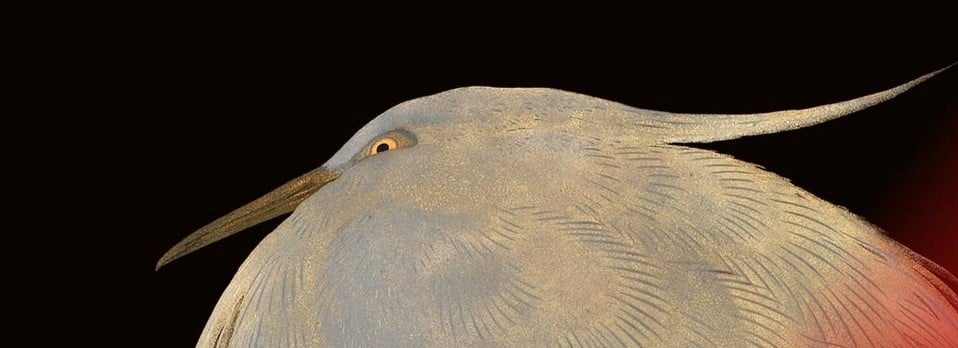
Knife (tantō) and sheath
c. 1550Steel, copper, gold, silver, wood | 3.5 cm (Width) x 3.0 cm (Depth); 35.4 cm (Length) (whole object) | RCIN 62625
This elegant dagger has a side-knife (kogatana) with decoration of bamboo, a theme which extends into the other silver fittings. Further silver and gold fittings are of a snail and a mythical lion–dog (shishi). The silver collar of the hilt is signed Yoshitsugu han (‘seal mark of Yoshitsugu’) and we may assume that all the silver fittings are by the same maker. This is probably Takahashi Yoshitsugu of the Tanaka–Tōryūsai school of sword-fitting makers, who worked in Edo during the period 1842–73. His involvement suggests that the earlier blade was remounted in the taste of the late Edo or early Meiji period.
Little is known of the swordsmith Tsunaie, except that he was working in the castle town of Odawara in Sagami Province (part of modern-day Kanagawa Prefecture) from about 1532 to 1555 and had the given name of Heisaburō. The blade is double-edged in the style known as moroha-zukuri with a central ridgeline, but with little visible tempering pattern (hamon). The dagger’s collar (habaki) is of copper with applied gold.
The tantō and sheath appear in one of the few photographs of objects loaned by Prince Alfred, Duke of Edinburgh to the South Kensington Museum in 1872, after his visit to Japan three years previously. In 1910, they were loaned with other arms and armour at Windsor to the Japan-British Exhibition at White City.
Text adapted from Japan: Courts and Culture (2020)







